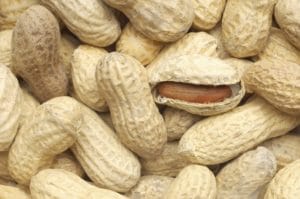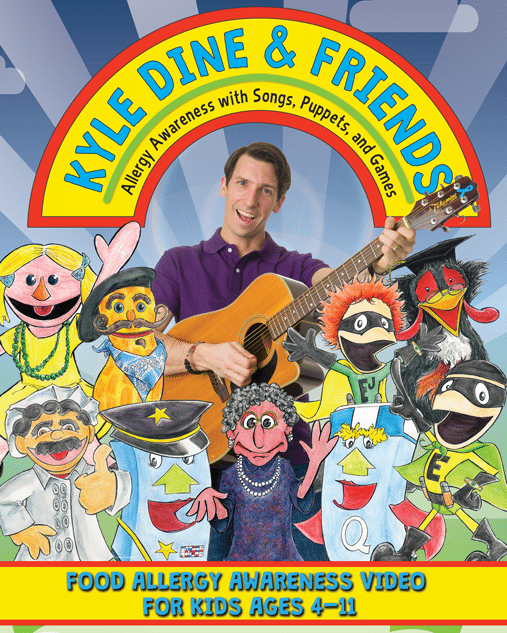Allergies to peanut are one of the most common and severe types of food allergies. When someone with a peanut allergy ingests peanuts, even a trace amount, that person is at risk of a severe allergic reaction, called anaphylaxis.
An anaphylactic reaction includes more than one of the body’s systems, such as the respiratory tract, gastrointestinal tract, the skin and cardiovascular symptom. Symptoms of an allergic reaction include tingling in the mouth, swelling of the tongue and throat, itchy skin or hives, difficulty breathing, abdominal cramping and vomiting. In a severe anaphylactic reaction, a person may experience a drop of blood pressure, loss of consciousness and even cardiac arrest and death.
One of the issues in managing peanut allergy is that symptoms can vary. A person may have had minor symptoms, only to suffer anaphylaxis on a subsequent exposure.
Because peanut allergy reactions can be severe, it is important that a person with this allergy carry an epinephrine auto-injector with them at all times. Peanut allergy is often considered a lifelong allergy, but research has shown up to 20 per cent of children may outgrow it by the time they reach school-age.
Prevalence
In the United States, the rate of peanut allergy in children increased by 3.5 times from 1997 to 2008, to a rate of 1.4 per cent. In Canada, it is estimated that 1.68 per cent of children and 0.71 per cent of adults have peanut allergy.
Not a Nut!
Often people think that peanuts are nuts, but in fact they come from the legume family. Other legumes include peas, beans and lentils. Because peanuts don’t belong to the tree nut family, it is quite possible for someone to be allergic to peanuts and not tree nuts (such as almonds, cashews and hazelnuts), and vice versa.
Risks With Nuts
Those who are allergic to peanuts are often advised not to eat tree nuts because of the risk of cross-contact during the manufacturing process, with peanuts and nuts on the same equipment. If you have a peanut allergy, talk to your allergist about whether you should also be avoiding tree nuts.
While the peanut and the tree nut are not relatives, studies show that one-third to half of people with peanut allergy also have a nut allergy.
Peanut-Free Schools
People often hear of schools being peanut-free, or having peanut “bans”. The reason there is concern over having peanuts or peanut products (such as peanut butter) in the school is because of the high rate of this allergy among children. Also, because reactions to peanuts are often severe (in the form of anaphylaxis) and peanuts and peanut butter can be oily or sticky and prone to residue being left on chairs, door knobs, etc., many parents, teachers and principals feel it is safer not to allow the product into the school.
Generally, such rules are not designed to guarantee a peanut-free environment, but simply to reduce the risk that students in the school who have peanut allergy will come into contact with the allergen, potentially causing a life-threatening reaction. Other options include allowing peanuts in a cafeteria, but offering peanut-free (or peanut- and nut-free) tables for allergic students.
Policies will vary depending on the allergies that students in any particular school or classroom have.
Why is Peanut Allergy on the Rise?
No one knows for certain why people have more allergies (including peanut allergies) today than they did in the past. One theory that has gained prominence is the hygiene hypothesis.
This hypothesis states that kids growing up in industrialized countries are not exposed to the level of bacteria, infections and parasites as kids who grow up in less clean or modern environments. (Livestock farms, for instance, have been shown to have a protective quality, known as the “Farm Effect”.)
The idea is that the immune system needs these exposures to develop properly, and without them, it is underworked – and begins to develop antibodies to otherwise harmless substances, such as peanuts or milk.
Other theories that attempt to explain a rise in food allergy include insufficient vitamin D, food processing (e.g. roasting and emulsification of peanuts for peanut butter, rather than fried or boiled peanuts), and the delay of exposure to the allergen in infancy. (See our Ask the Allergist answer here.)
Is there a Cure?
Currently, there is no cure for peanut allergy. However, researchers are working on ways to “desensitize” patients to peanuts and other allergens such as milk or egg, so they are less likely to react to small peanut quantities. This is begun in a very controlled setting, with emergency treatment at hand, and must never be initiated at home.
The most researched and talked about form of desensitization at this point is called oral immunotherapy (OIT).
In this treatment, an allergic child consumes gradually increasing amounts of his or her allergen (in this case, peanut powder) in an effort to retrain the immune system. To date, OIT has worked in a majority of children in clinical studies, but there have been side effects and the therapy is not yet approved. Those who successfully completed study trials need to stay on a daily dose in order to ensure they won’t react.
See Also: Managing Peanut Allergy






